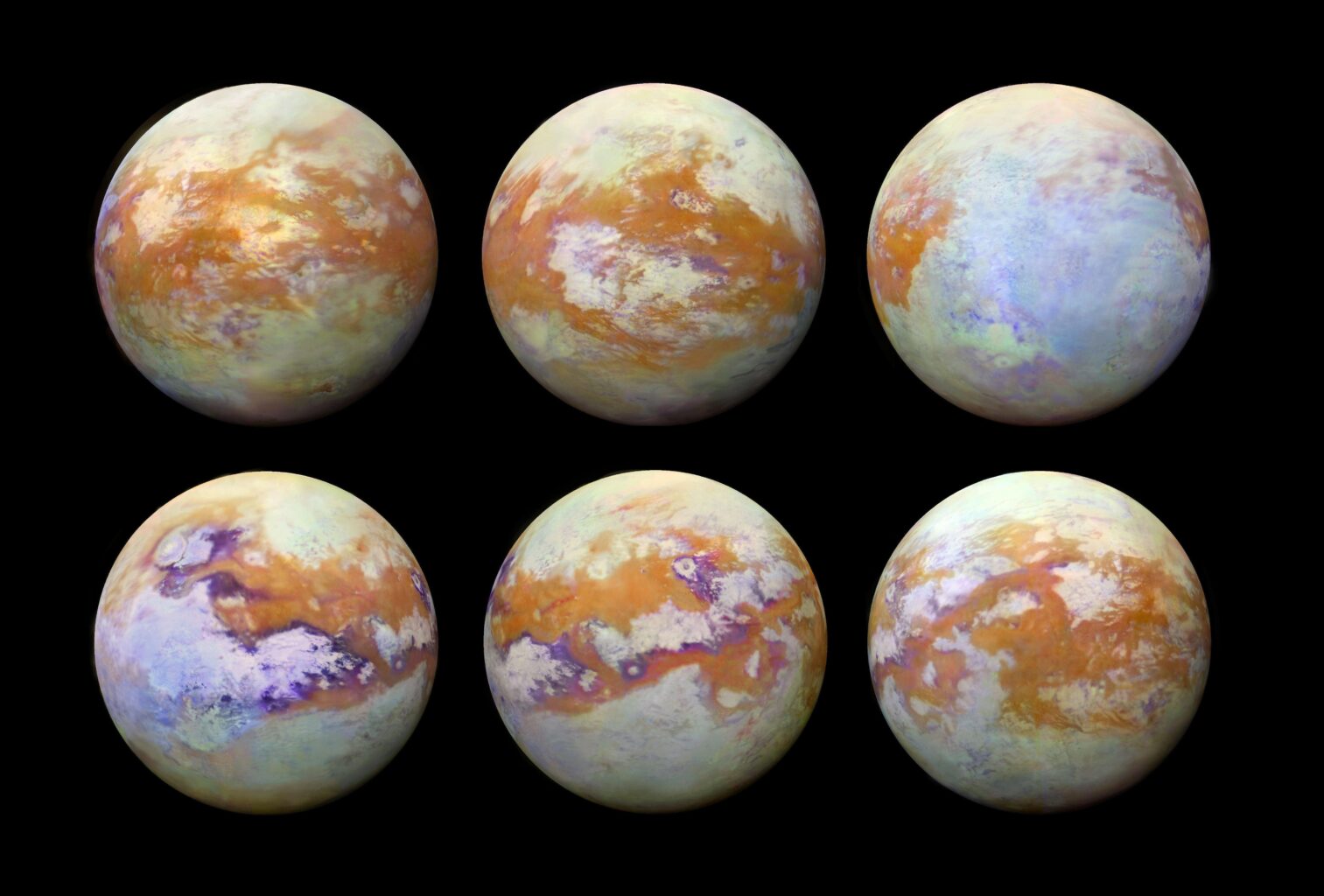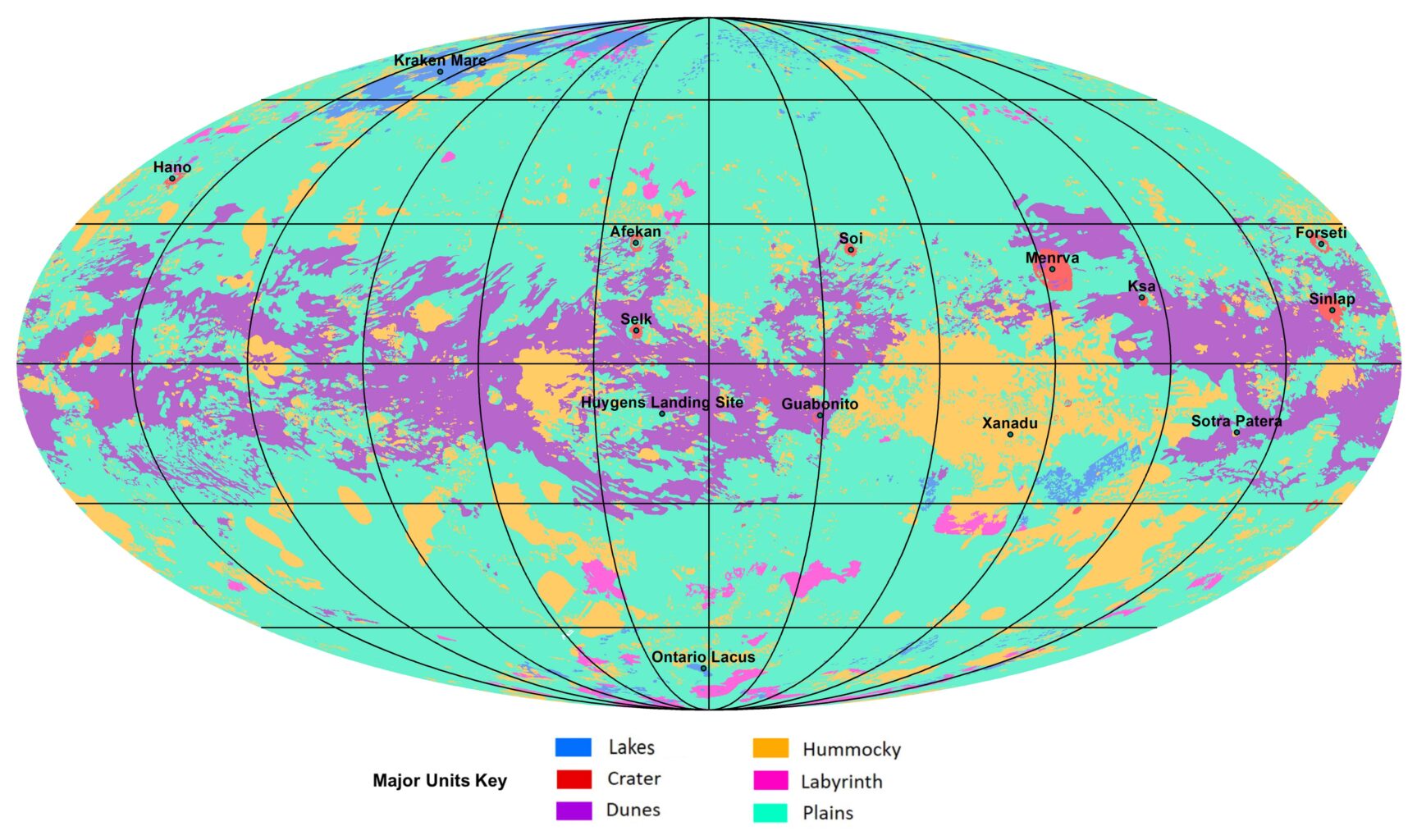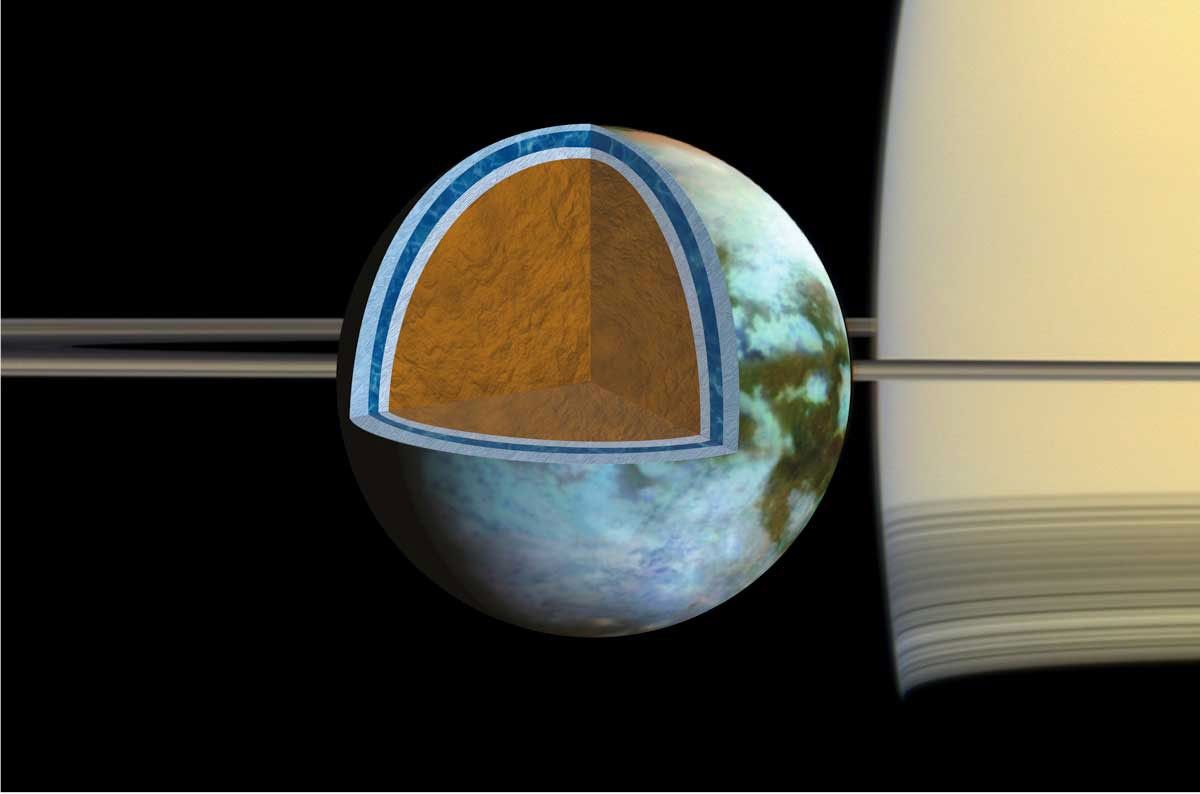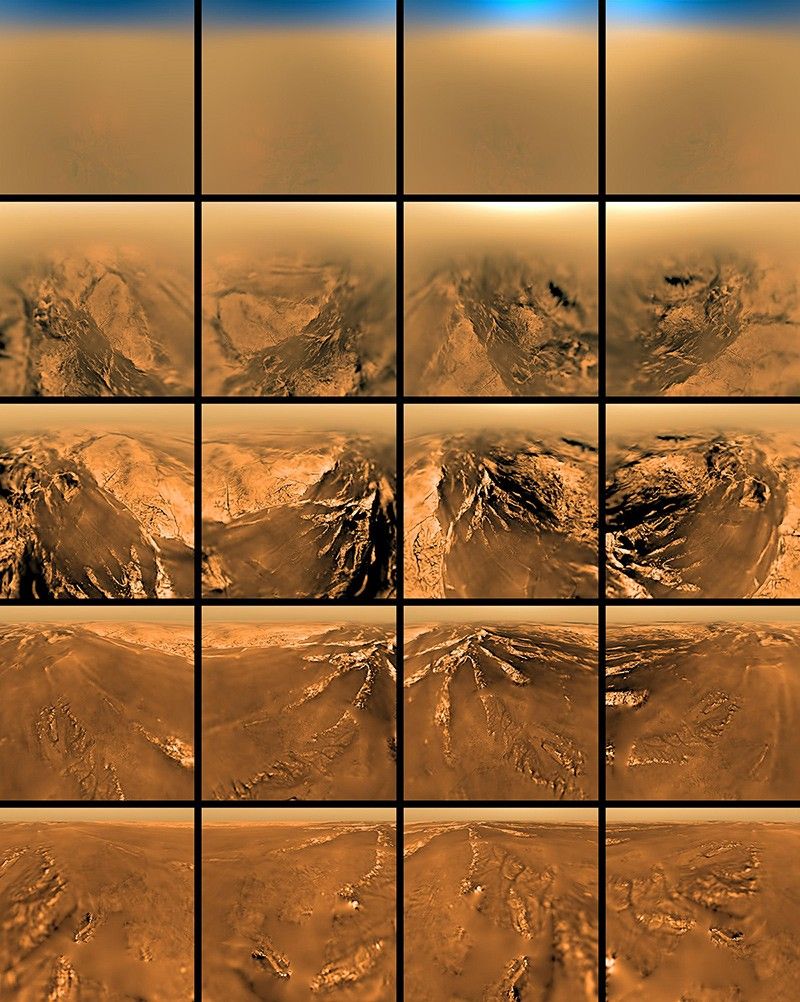Saturn’s moon Titan is one of the most fascinating celestial bodies in our Solar System. Unlike any other moon, Titan possesses a thick atmosphere, liquid lakes, complex organic chemistry, and even a hidden subsurface ocean that could potentially harbour life. These unique characteristics make it a prime target for future space missions.
Titan is often compared to early Earth, as its dense nitrogen-rich atmosphere and organic-rich surface provide a glimpse into the conditions that may have led to life on our planet. With the Cassini-Huygens mission revealing stunning insights about its terrain and weather patterns, and NASA’s upcoming Dragonfly mission poised to explore it further, Titan remains at the forefront of planetary exploration. In this article, we explore five reasons why Titan stands out as the most intriguing moon in the solar system.
A Thick Atmosphere Unlike Any Other Moon
One of Titan’s most distinctive features is its dense atmosphere, which sets it apart from other moons in the solar system. Titan’s atmosphere is primarily composed of nitrogen (about 95%) with traces of methane (around 5%). This composition is remarkably similar to Earth’s atmosphere, making Titan one of the most Earth-like bodies in our solar system in terms of atmospheric conditions.

Titan’s thick atmosphere gives it an orange haze that obscures its surface from direct view. This haze is caused by photochemical reactions in the upper atmosphere, where sunlight breaks down methane into more complex organic molecules. The presence of such an atmosphere makes Titan an excellent natural laboratory for studying atmospheric processes, weather patterns, and potential prebiotic chemistry.
The Role of Atmospheric Pressure and Weather
Unlike the thin atmospheres found on other moons, Titan’s atmospheric pressure is about 1.5 times that of Earth’s at sea level. This means that if a human were to stand on Titan’s surface, they wouldn’t require a pressure suit – only an oxygen mask and protection from the cold. The atmosphere also supports weather patterns, including methane rain, seasonal changes, and even massive storm systems that resemble those found on Earth. This dynamic climate makes Titan an extraordinary candidate for future exploration.
A World with Liquid Lakes and Seas
Titan is the only known celestial body in the solar system, apart from Earth, to have stable liquids on its surface. However, instead of water, these lakes and seas are composed of liquid methane and ethane. The most notable of these bodies of liquid are Kraken Mare, Ligeia Mare, and Punga Mare, located in Titan’s northern hemisphere.

The Hydrological Cycle on Titan
Titan’s hydrological cycle is similar to Earth’s water cycle but operates with hydrocarbons instead of water. Methane and ethane evaporate, form clouds, and eventually precipitate as rain. This cycle plays a crucial role in shaping Titan’s landscape, creating river channels, shorelines, and even seasonal weather patterns. The presence of these liquid reservoirs raises intriguing questions about the possibility of exotic life forms that could survive in liquid methane rather than water.
A Complex Organic Chemistry Resembling Early Earth
Another compelling reason why Titan is so intriguing is its rich organic chemistry. Scientists believe that Titan’s atmosphere and surface processes closely resemble conditions on early Earth before life emerged. The Cassini-Huygens mission provided detailed insights into Titan’s atmospheric chemistry, revealing the presence of complex organic molecules, including hydrocarbons and nitriles, which are essential building blocks for life.
Implications for Prebiotic Chemistry
Titan’s environment provides a unique opportunity to study prebiotic chemistry – the chemical processes that might have led to the emergence of life. The interactions between sunlight, methane, and nitrogen in Titan’s atmosphere result in the production of tholins, complex organic compounds that could play a role in the development of life. By studying Titan, scientists hope to gain a better understanding of how life might arise elsewhere in the universe.
A Subsurface Ocean That Might Harbor Life
While Titan’s surface is dominated by ice and hydrocarbon lakes, evidence suggests the existence of a vast liquid water ocean beneath its icy crust. This subsurface ocean is believed to contain water mixed with ammonia, which acts as an antifreeze, allowing the ocean to remain in a liquid state despite Titan’s frigid temperatures.

Comparison with Other Ocean Worlds
Titan is not the only moon suspected to harbour a subsurface ocean – Europa and Enceladus also have hidden oceans beneath their icy shells. However, Titan’s ocean is unique because of its potential interaction with the organic-rich surface. If material from the surface can mix with the subsurface ocean, Titan could have the necessary conditions for life to develop. The presence of a liquid water ocean beneath an organic-rich environment makes Titan an extremely promising target for astrobiology.
Future Missions That Could Unlock Its Mysteries
Titan’s unique characteristics make it a prime target for future space missions. One of the most anticipated upcoming missions is NASA’s Dragonfly, a drone-like rotorcraft designed to explore Titan’s diverse landscapes and search for signs of prebiotic chemistry.

What Dragonfly Will Explore
Scheduled for launch in the late 2020s, the Dragonfly mission will land on Titan and travel across its surface, investigating dunes, lakes, and potentially even cryovolcanic regions. The mission’s primary goal is to study Titan’s chemistry and assess its habitability. By directly sampling the organic compounds and surface materials, Dragonfly could provide groundbreaking insights into the building blocks of life beyond Earth.
Dragonfly will also help scientists understand Titan’s meteorology, geology, and potential subsurface interactions. Since Titan’s atmosphere is dense and gravity is low, the drone will be able to fly efficiently, covering long distances to explore multiple sites. This mobility will allow NASA to study various environments and compare their chemical compositions.
The Cassini Mission and Its Impact on Our Understanding of Titan
NASA’s Cassini-Huygens mission, which explored Saturn and its moons from 2004 to 2017, played a crucial role in expanding our knowledge of Titan. The Cassini spacecraft performed over 100 flybys of Titan, using radar to penetrate the thick atmosphere and map the moon’s surface.
The most groundbreaking event was the Huygens probe landing in 2005, the first successful landing on Titan. The probe transmitted data for over 90 minutes, revealing a world with river channels, icy pebbles, and an atmosphere rich in organic compounds. Cassini’s radar also confirmed the existence of methane lakes and provided evidence for Titan’s subsurface ocean.
The Cassini mission fundamentally changed our understanding of Titan, showing it to be one of the most Earth-like worlds in the solar system and a key target for future exploration.
Frequently Asked Questions
Could Humans Survive on Titan?
While Titan’s atmospheric pressure is hospitable, its extreme cold (around -290°F or -179°C) and lack of oxygen make it inhospitable for humans without specialized equipment. However, its dense atmosphere and low gravity make it a relatively easy place to land and explore compared to other celestial bodies.
What Makes Titan Different from Europa and Enceladus?
Europa and Enceladus are known for their subsurface oceans and potential hydrothermal activity. However, Titan stands out due to its thick atmosphere, surface lakes, and complex organic chemistry, making it a unique target for studying both atmospheric and prebiotic processes.
How Does Titan’s Weather Compare to Earth’s?
Titan experiences methane rain, seasonal weather changes, and wind-driven dunes, all of which resemble weather patterns on Earth. However, instead of water, methane dominates the climate, creating a fascinating and alien environment unlike anything else in the solar system.











